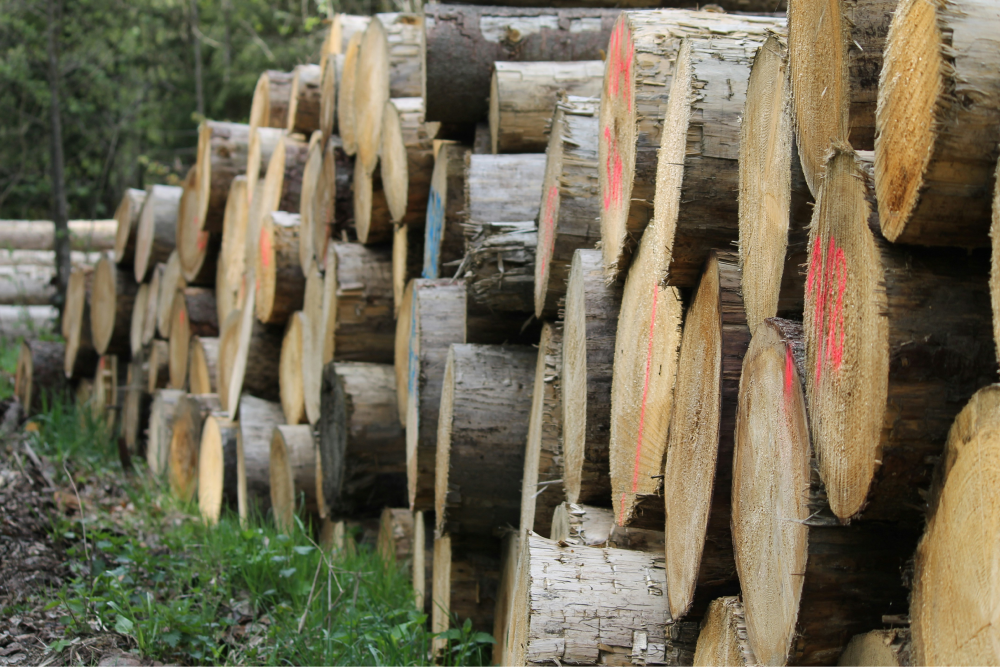How Many Geothermal Power Plants in Texas?
3 minute readAnalysis of geothermal development in Texas through 2025. From pilot projects to legislative trends and future potential.
Home > Learning Center > Energy Production > What is Biomass Energy?
Learn the basics of biomass energy
3 minute read • Last update December 2024

Biomass energy refers to the process of generating power by burning renewable organic matter from plants and animals.
The way we produce and consume energy around the world is changing. As we transition away from traditional fossil fuels like coal and oil, biomass fuel is emerging as a renewable choice for more sustainable electricity generation.
But what is biomass energy, how is it generated, and what is it typically used for? Let’s take a closer look.
Biomass energy harnesses renewable organic matter from plants and animals to generate power. Source examples include:
Because many sources listed in this biomass energy definition can be replenished through natural processes without human involvement, there should be no confusion over whether biomass is renewable or nonrenewable. Plus, the fact that human endeavors can create even more biomass from which to extract stored chemical energy makes it an even more attractive and viable alternative to burning fossil fuels.
Why is biomass renewable energy such a game-changer? Because it can be turned directly into heat, converted to electricity, or processed to make transportation fuels.
Let’s start with the obvious question: How is biomass energy generated from organic materials?
The conversion of mass to various other forms is typically accomplished using one of four distinct methods
Burning, also known as direct combustion, involves the direct burning of organic materials (such as wood, agricultural waste, and other biological substances) to convert biomass and generate heat. The heat produced is then used to boil water, creating steam that drives turbines to generate electricity. Direct firing has been used to create heat for industrial processes and generate steam-powered turbines.
Whereas burning is typically used to convert any given biomass energy source into heat, thermal conversion focuses on the production of solid, liquid, and gaseous fuels using one of the following methods:
Biochemical conversion utilizes microorganisms like bacteria and yeast to break down renewable biomass fuels into bio-based products, usually via fermentation. The sugars derived from the original biomass sources are converted into biofuels like ethanol, which can be used to fuel vehicles.
This type of conversion involves the use of chemical reactions to transform biomass energy sources into other chemicals, materials, and advanced biofuels like biodiesel. Chemical conversion processes are diverse and offer a range of possibilities for creating high-value products from relatively low-value biomass feedstocks like vegetable oils, animal fats, and greases.
What is biomass energy going to do for global energy in years to come? Bioenergy is the largest source of renewable energy in the world — making up 55% of renewable energy and over 6% of the global energy supply — and usage increased an average of 3% per year between 2010 and 2022.
The evolution of biomass energy has seen impressive advancements, from edible crops to more sophisticated options like biogas digesters and bioethanol.
However, biomass energy often requires purpose-grown plants and trees, raising concerns about land use and sustainability. To secure its future, careful governance and responsible management are essential. A 2021 European report indicated that future biomass demand may outstrip supply, emphasizing the need to prioritize high-value uses and scenarios where biomass plays a pivotal role in achieving a net-zero economy.
In the coming years, biomass energy will continue to evolve, with a focus on large-scale sustainable production, efficient supply chains, and expanding markets. As we strive to reduce our carbon footprint and transition towards renewable energy sources, biomass energy remains a critical contributor. However, it’s yet to be seen how technological advancements and evolving policies will play out to ensure its stability and sustainability as a long-term market solution.
Javier Hinojosa, Vice President of Retail Power at BKV Energy, has over fifteen years of management experience in M&A, consulting, supply chain, technology, and operations. He is responsible for overseeing all aspects of BKV Energy's business, from finance and brand development to customer service and go-to-market strategy.

Analysis of geothermal development in Texas through 2025. From pilot projects to legislative trends and future potential.

How many natural gas plants operate in Texas? How many more are proposed amid surging energy demand?
Get $50 off your electric bill!
Use code BKVEJOINUS50
Enter your zip code to shop BKV Energy's affordable, fixed-rate Texas electricity plans. Use the promo code for $50 off your electric bill.